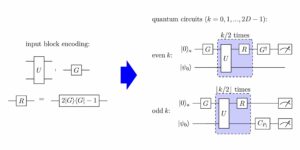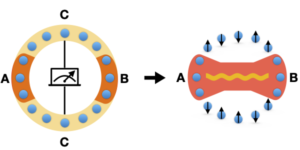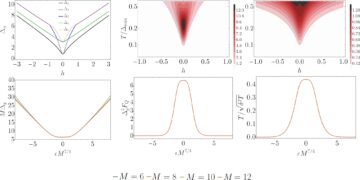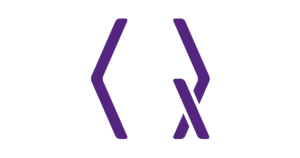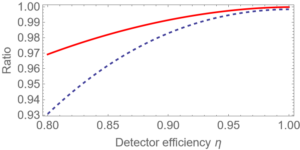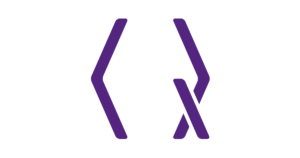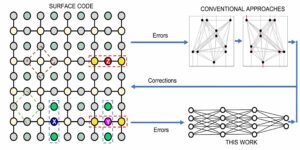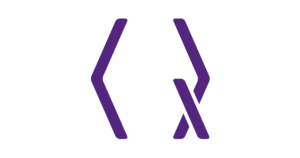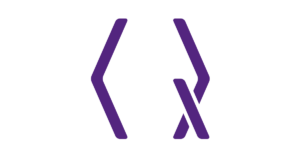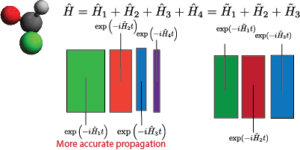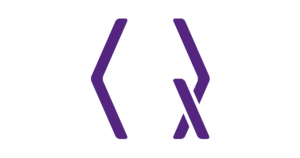School of Mathematical Sciences, University of Nottingham, University Park, NG8 2SD Nottingham, United Kingdom
Find this paper interesting or want to discuss? Scite or leave a comment on SciRate.
Abstract
Continuous-time measurements are instrumental for a multitude of tasks in quantum engineering and quantum control, including the estimation of dynamical parameters of open quantum systems monitored through the environment. However, such measurements do not extract the maximum amount of information available in the output state, so finding alternative optimal measurement strategies is a major open problem.
In this paper we solve this problem in the setting of discrete-time input-output quantum Markov chains. We present an efficient algorithm for optimal estimation of one-dimensional dynamical parameters which consists of an iterative procedure for updating a `measurement filter’ operator and determining successive measurement bases for the output units. A key ingredient of the scheme is the use of a coherent quantum absorber as a way to post-process the output after the interaction with the system. This is designed adaptively such that the joint system and absorber stationary state is pure at a reference parameter value. The scheme offers an exciting prospect for optimal continuous-time adaptive measurements, but more work is needed to find realistic practical implementations.
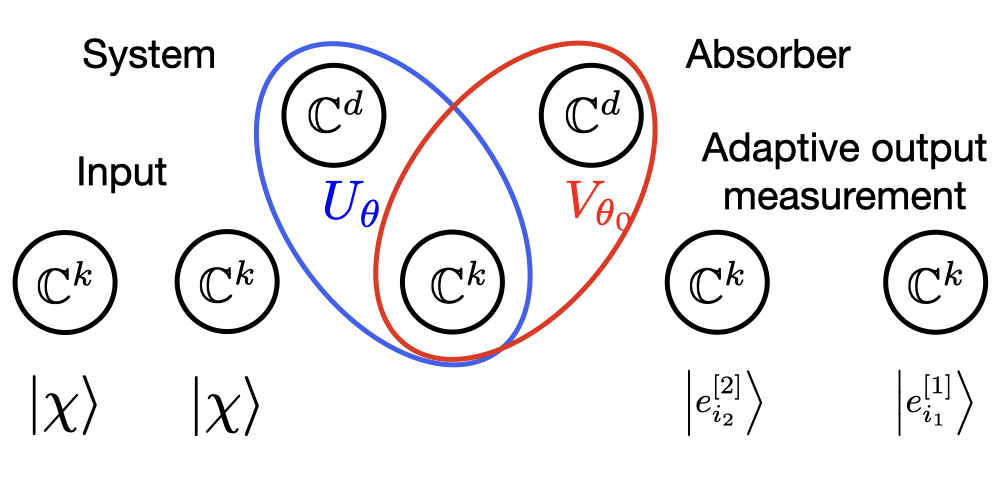
Featured image: Adaptive measurement filter: the output units undergo post-processing with a coherent quantum absorber, followed by applying an adaptive measurement computed by the measurement filter algorithm
► BibTeX data
► References
[1] C. W. Gardiner and P. Zoller, Quantum Noise: A Handbook of Markovian and Non-Markovian Quantum Stochastic Methods with Applications to Quantum Optics, 3rd ed. (Springer-Verlag, Berlin and New York, 2004).
[2] H. M. Wiseman and G. J. Milburn, Quantum Measurement and Control (Cambridge University Press, 2010).
https://doi.org/10.1017/CBO9780511813948
[3] J. Combes, J. Kerckhoff, and M. Sarovar, The SLH framework for modeling quantum input-output networks, Adv. Phys. X 2, 784 (2017).
https://doi.org/10.1080/23746149.2017.1343097
[4] V. P. Belavkin, Nondemolition principle of quantum measurement theory, Found. Phys. 24, 685 (1994).
https://doi.org/10.1007/BF02054669
[5] L. Bouten, R. van Handel, and M. R. James, An introduction to quantum filtering, SIAM J. Control Optim. 46, 2199 (2007).
https://doi.org/10.48550/arXiv.math/0601741
[6] H. J. Carmichael, An Open Systems Approach to Quantum Optics (Springer-Verlag, Berlin, 1993).
https://doi.org/10.1007/978-3-540-47620-7
[7] J. Dalibard, Y. Castin, and K. Mølmer, Wave-function approach to dissipative processes in quantum optics, Phys. Rev. Lett. 68, 580 (1992).
https://doi.org/10.1103/PhysRevLett.68.580
[8] H. M. Wiseman and G. J. Milburn, Quantum theory of field-quadrature measurements, Phys. Rev. A 47, 642 (1993).
https://doi.org/10.1103/PhysRevA.47.642
[9] L. Ljung, System Identification: Theory for the User, 2nd ed. (Prentice-Hall, 1999).
https://doi.org/10.1016/S0005-1098(01)00214-X
[10] S. F. Huelga, C. Macchiavello, T. Pellizzari, A. K. Ekert, M. B. Plenio, and J. I. Cirac, Improvement of frequency standards with quantum entanglement, Phys. Rev. Lett. 79, 3865 (1997).
https://doi.org/10.1103/PhysRevLett.79.3865
[11] B. Escher, R. de Matos Filho, and L. Davidovich, General framework for estimating the ultimate precision limit in noisy quantum-enhanced metrology, Nature Phys. 7, 406–411 (2011).
https://doi.org/10.1038/nphys1958
[12] R. Demkowicz-Dobrzański, J. Kołodyński, and M. Guţă, The elusive heisenberg limit in quantum-enhanced metrology, Nature Communications 3, 1063 (2012).
https://doi.org/10.1038/ncomms2067
[13] F. Benatti, S. Alipour, and A. T. Rezakhani, Dissipative quantum metrology in manybody systems of identical particles, New J. Phys. 16, 015023 (2014).
https://doi.org/10.1088/1367-2630/16/1/015023
[14] A. Smirne, J. Kołodyński, S. F. Huelga, and R. Demkowicz-Dobrzański, Ultimate precision limits for noisy frequency estimation, Phys. Rev. Lett. 116, 120801 (2016).
https://doi.org/10.1103/PhysRevLett.116.120801
[15] R. Demkowicz-Dobrzański, J. Czajkowski, and P. Sekatski, Adaptive quantum metrology under general markovian noise, Phys. Rev. X 7, 041009 (2017).
https://doi.org/10.1103/PhysRevX.7.041009
[16] S. Zhou, M. Zhang, J. Preskill, and L. Jiang, Achieving the heisenberg limit in quantum metrology using quantum error correction, Nature Communications 78, 78 (2018).
https://doi.org/10.1038/s41467-017-02510-3
[17] H. Mabuchi, Dynamical identification of open quantum systems, Quantum Semiclass. Opt. 8, 1103 (1996).
https://doi.org/10.1088/1355-5111/8/6/002
[18] J. Gambetta and H. M. Wiseman, State and dynamical parameter estimation for open quantum systems, Phys. Rev. A 64, 042105 (2001).
https://doi.org/10.1103/PhysRevA.64.042105
[19] D. W. Berry and H. M. Wiseman, Adaptive quantum measurements of a continuously varying phase, Phys. Rev. A 65, 043803 (2002).
https://doi.org/10.1103/PhysRevA.65.043803
[20] D. T. Pope, H. M. Wiseman, and N. K. Langford, Adaptive phase estimation is more accurate than nonadaptive phase estimation for continuous beams of light, Phys. Rev. A 70, 043812 (2004).
https://doi.org/10.1103/PhysRevA.70.043812
[21] J. F. Ralph, K. Jacobs, and C. D. Hill, Frequency tracking and parameter estimation for robust quantum state estimation, Phys. Rev. A 84, 052119 (2011).
https://doi.org/10.1103/PhysRevA.84.052119
[22] B. Chase and J. M. Geremia, Single-shot parameter estimation via continuous quantum measurement, Phys. Rev. A 79, 022314 (2009).
https://doi.org/10.1103/PhysRevA.79.022314
[23] P. Six, P. Campagne-Ibarcq, L. Bretheau, B. Huard, and P. Rouchon, Parameter estimation from measurements along quantum trajectories, in 2015 54th IEEE Conference on Decision and Control (CDC) (2015) pp. 7742–7748.
https://doi.org/10.1109/CDC.2015.7403443
[24] K. Macieszczak, M. Guta, I. Lesanovsky, and J. P. Garrahan, Dynamical phase transitions as a resource for quantum enhanced metrology, Physical Review A 93, 022103 (2016).
https://doi.org/10.1103/PhysRevA.93.022103
[25] F. Albarelli, M. A. C. Rossi, M. G. A. Paris, and M. G. Genoni, Ultimate limits for quantum magnetometry via time-continuous measurements, New J. Phys. 19, 123011 (2017).
https://doi.org/10.1088/1367-2630/aa9840
[26] F. Albarelli, M. A. C. Rossi, D. Tamascelli, and M. G. Genoni, Restoring heisenberg scaling in noisy quantum metrology by monitoring the environment, Quantum 2, 110 (2018).
https://doi.org/10.22331/q-2018-12-03-110
[27] M. B. Plenio and S. F. Huelga, Sensing in the presence of an observed environment, Phys. Rev. A 93, 032123 (2016).
https://doi.org/10.1103/PhysRevA.93.032123
[28] S. Gammelmark and K. Mølmer, Bayesian parameter inference from continuously monitored quantum systems, Phys. Rev. A 87, 032115 (2013).
https://doi.org/10.1103/PhysRevA.87.032115
[29] A. Negretti and K. Mølmer, Estimation of classical parameters via continuous probing of complementary quantum observables, New J. Phys. 15, 125002 (2013).
https://doi.org/10.1088/1367-2630/15/12/125002
[30] A. H. Kiilerich and K. Mølmer, Bayesian parameter estimation by continuous homodyne detection, Phys. Rev. A 94, 032103 (2016).
https://doi.org/10.1103/PhysRevA.94.032103
[31] J. F. Ralph, S. Maskell, and K. Jacobs, Multiparameter estimation along quantum trajectories with sequential monte carlo methods, Phys. Rev. A 96, 052306 (2017).
https://doi.org/10.1103/PhysRevA.96.052306
[32] C. Zhang, K. Zhou, W. Feng, and X.-Q. Li, Estimation of parameters in circuit qed by continuous quantum measurement, Phys. Rev. A 99, 022114 (2019).
https://doi.org/10.1103/PhysRevA.99.022114
[33] M. Tsang, Time-symmetric quantum theory of smoothing, Phys. Rev. Lett. 102, 250403 (2009a).
https://doi.org/10.1103/PhysRevLett.102.250403
[34] M. Tsang, Optimal waveform estimation for classical and quantum systems via time-symmetric smoothing, Phys. Rev. A 80, 033840 (2009b).
https://doi.org/10.1103/PhysRevA.80.033840
[35] M. Tsang, Optimal waveform estimation for classical and quantum systems via time-symmetric smoothing. ii. applications to atomic magnetometry and hardy’s paradox, Phys. Rev. A 81, 013824 (2010).
https://doi.org/10.1103/PhysRevA.81.013824
[36] I. Guevara and H. Wiseman, Quantum state smoothing, Phys. Rev. Lett. 115, 180407 (2015).
https://doi.org/10.1103/PhysRevLett.115.180407
[37] M. Tsang, H. M. Wiseman, and C. Caves, Fundamental quantum limit to waveform estimation, Phys. Rev. Lett. 106, 090401 (2011).
https://doi.org/10.1103/PhysRevLett.106.090401
[38] M. Tsang and R. Nair, Fundamental quantum limits to waveform detection, Phys. Rev. A 86, 042115 (2012).
https://doi.org/10.1103/PhysRevA.86.042115
[39] M. Guţă and N. Yamamoto, System identification for passive linear quantum systems, IEEE Trans. Automat. Contr. 61, 921 (2016).
https://doi.org/10.1109/TAC.2015.2448491
[40] M. G. Genoni, Cramér-rao bound for time-continuous measurements in linear gaussian quantum systems, Phys. Rev. A 95, 012116 (2017).
https://doi.org/10.1103/PhysRevA.95.012116
[41] M. Levitt and M. Guţă, Identification of single-input–single-output quantum linear systems, Phys. Rev. A 95, 033825 (2017).
https://doi.org/10.1103/PhysRevA.95.033825
[42] M. Levitt, M. Guţă, and H. I. Nurdin, Power spectrum identification for quantum linear systems, Automatica 90, 255 (2018).
https://doi.org/10.1016/j.automatica.2017.12.037
[43] M. Guţă, Fisher information and asymptotic normality in system identification for quantum markov chains, Physical Review A 83, 062324 (2011).
https://doi.org/10.1103/PhysRevA.83.062324
[44] C. Catana, L. Bouten, and M. Guţă, Fisher informations and local asymptotic normality for continuous-time quantum markov processes, Journal of Physics A: Mathematical and Theoretical 48, 365301 (2015).
https://doi.org/10.1088/1751-8113/48/36/365301
[45] A. H. Kiilerich and K. Mølmer, Estimation of atomic interaction parameters by photon counting, Phys. Rev. A 89, 052110 (2014).
https://doi.org/10.48550/arXiv.1403.1192
[46] S. Gammelmark and K. Mølmer, Fisher information and the quantum cramér-rao sensitivity limit of continuous measurements, Phys. Rev. Lett. 112, 170401 (2014).
https://doi.org/10.1103/PhysRevLett.112.170401
[47] M. Guţă and J. Kiukas, Equivalence classes and local asymptotic normality in system identification for quantum markov chains, Communications in Mathematical Physics 335, 1397–1428 (2014).
https://doi.org/10.1007/s00220-014-2253-0
[48] M. Guţă and J. Kiukas, Information geometry and local asymptotic normality for multi-parameter estimation of quantum markov dynamics, J. Math. Phys. 58, 052201 (2017).
https://doi.org/10.1063/1.4982958
[49] C. W. Helstrom, Quantum detection and estimation theory (Academic press, 1976).
[50] A. S. Holevo, Probabilistic and Statistical Aspects of Quantum Theory (North Holland, Amsterdam, 1982).
https://doi.org/10.1007/978-88-7642-378-9
[51] S. L. Braunstein and C. M. Caves, Statistical distance and the geometry of quantum states, Phys. Rev. Lett. 72, 3439 (1994).
https://doi.org/10.1103/PhysRevLett.72.3439
[52] J. Gough and M. R. James, The series product and its application to quantum feedforward and feedback networks, IEEE Trans. Automat. Control 54, 2530 (2009).
https://doi.org/10.48550/arXiv.0707.0048
[53] S. Zhou, C.-L. Zou, and L. Jiang, Saturating the quantum cramér–rao bound using locc, Quantum Sci. Technol. 5, 025005 (2020).
https://doi.org/10.1088/2058-9565/ab71f8
[54] R. D. Gill and S. Massar, State estimation for large ensembles, Phys. Rev. A 61, 042312 (2000).
https://doi.org/10.1103/PhysRevA.61.042312
[55] K. Stannigel, P. Rabl, and P. Zoller, Driven-dissipative preparation of entangled states in cascaded quantum-optical networks, New J. Phys. 12, 063014 (2012).
https://doi.org/10.1088/1367-2630/14/6/063014
[56] T. J. Osborne, J. Eisert, and F. Verstraete, Holographic quantum states, Phys. Rev. Lett. 105, 260401 (2010).
https://doi.org/10.1103/PhysRevLett.105.260401
[57] I. Lesanovsky, M. van Horssen, M. Guţă, and J. P. Garrahan, Characterization of dynamical phase transitions in quantum jump trajectories beyond the properties of the stationary state, Phys. Rev. Lett. 110, 150401 (2013).
https://doi.org/10.1103/PhysRevLett.110.150401
[58] R. Demkowicz-Dobrzański, W. Górecki, and M. Guţă, Multi-parameter estimation beyond quantum fisher information, Journal of Physics A: Mathematical and Theoretical 53, 363001 (2020).
https://doi.org/10.1088/1751-8121/ab8ef3
[59] J. Kiukas and M. Guţă, in preparation (2022).
[60] E. L. Lehmann and G. Casella, Theory of point estimation (Springer, 1998).
https://doi.org/10.1007/b98854
[61] P. J. Bickel, Y. Ritov, and T. Rydén, Asymptotic normality of the maximum likelihood estimator for general hidden markov models, Ann. Statist. 26, 1614–1635 (1998).
https://doi.org/10.1214/aos/1024691255
[62] B. Efron and D. V. Hinkley, Assessing the accuracy of the maximum likelihood estimator: Observed versus expected fisher information, Biometrika 65, 457–487 (1978).
https://doi.org/10.1093/biomet/65.3.457
Cited by
[1] Marco Radaelli, Gabriel T. Landi, Kavan Modi, and Felix C. Binder, “Fisher information of correlated stochastic processes”, arXiv:2206.00463, (2022).
The above citations are from SAO/NASA ADS (last updated successfully 2023-04-06 13:40:29). The list may be incomplete as not all publishers provide suitable and complete citation data.
Could not fetch Crossref cited-by data during last attempt 2023-04-06 13:40:18: cURL error 28: Operation timed out after 10001 milliseconds with 0 bytes received
This Paper is published in Quantum under the Creative Commons Attribution 4.0 International (CC BY 4.0) license. Copyright remains with the original copyright holders such as the authors or their institutions.
- SEO Powered Content & PR Distribution. Get Amplified Today.
- Platoblockchain. Web3 Metaverse Intelligence. Knowledge Amplified. Access Here.
- Source: https://quantum-journal.org/papers/q-2023-04-06-973/
- :is
- ][p
- 1
- 10
- 102
- 11
- 110
- 116
- 1994
- 1996
- 1998
- 1999
- 2001
- 2011
- 2012
- 2014
- 2016
- 2017
- 2018
- 2019
- 2020
- 2022
- 28
- 39
- 7
- 70
- 8
- 84
- 9
- a
- above
- ABSTRACT
- academic
- access
- accuracy
- accurate
- achieving
- affiliations
- After
- algorithm
- All
- alternative
- amount
- amsterdam
- and
- Application
- applications
- Applying
- approach
- ARE
- AS
- aspects
- Assessing
- At
- author
- authors
- available
- Bayesian
- BE
- berlin
- Beyond
- bound
- Break
- by
- cambridge
- CDC
- chains
- chase
- classes
- COHERENT
- comment
- Commons
- Communications
- complementary
- complete
- Conference
- continuous
- continuously
- control
- copyright
- data
- DCM
- decision
- Den
- designed
- Detection
- determining
- discuss
- distance
- during
- dynamics
- e
- ed
- efficient
- Engineering
- enhanced
- Environment
- error
- Ether (ETH)
- exciting
- expected
- extract
- feedback
- filter
- filtering
- Find
- finding
- followed
- For
- found
- Framework
- Frequency
- from
- fundamental
- General
- geometry
- harvard
- Hidden
- holders
- Holland
- holographic
- However
- HTTPS
- i
- identical
- Identification
- IEEE
- image
- improvement
- in
- Including
- information
- institutions
- instrumental
- interaction
- interesting
- International
- Introduction
- ITS
- JavaScript
- joint
- journal
- jump
- Key
- large
- Last
- Leave
- License
- light
- LIMIT
- limits
- List
- local
- major
- Marco
- math
- mathematical
- max-width
- maximum
- maximum amount
- measurements
- methods
- Metrology
- modeling
- models
- monitored
- monitoring
- Month
- more
- multitude
- Nature
- needed
- networks
- New
- New York
- Noise
- North
- of
- Offers
- on
- open
- operation
- operator
- optics
- optimal
- original
- output
- Paper
- Paradox
- parameter
- parameters
- paris
- Park
- passive
- phase
- physical
- Physics
- plato
- Plato Data Intelligence
- PlatoData
- Point
- post-processing
- power
- Practical
- Precision
- presence
- present
- press
- principle
- Problem
- processes
- Product
- properties
- prospect
- provide
- published
- publisher
- publishers
- Quantum
- quantum entanglement
- quantum error correction
- quantum measurement
- Quantum optics
- quantum systems
- realistic
- references
- remains
- resource
- restoring
- review
- robust
- s
- scaling
- scheme
- SCI
- SCIENCES
- Sensitivity
- Series
- setting
- siam
- SIX
- So
- SOLVE
- Spectrum
- standards
- State
- States
- statistical
- strategies
- Strategy
- Successfully
- such
- suitable
- system
- Systems
- tasks
- that
- The
- the joint
- their
- theoretical
- Through
- Timed
- Title
- to
- Tracking
- transitions
- ultimate
- under
- United
- units
- university
- updated
- updating
- URL
- use
- User
- value
- Versus
- via
- volume
- W
- Way..
- which
- with
- Work
- X
- year
- zephyrnet

